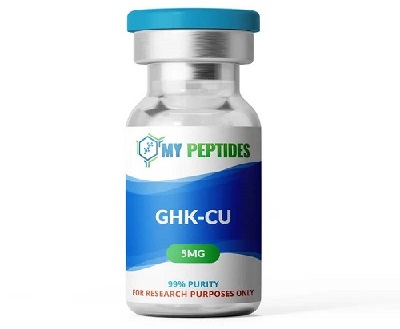
What Exactly Is GHK-Cu?
Imagine three amino acids glycine, histidine, and lysine deciding to form a band and inviting copper to be their frontman. That’s GHK-Cu: a naturally occurring copper peptide complex first discovered in 1973 by biochemist Loren Pickart.
Found in plasma, saliva, and even urine (yes, science is glamorously weird), GHK-Cu levels decrease as we age. Cue the collective sigh. But here’s the twist: researchers quickly noticed this tripeptide isn’t just loitering in the body it’s helping regulate tissue repair, stimulate collagen, and even rejuvenate skin and hair. This remarkable complex
GHK-Cu for Tissue Repair and Regeneration, is being increasingly explored for its potential in regenerative medicine.
Now available for research, GHK-Cu is attracting attention in anti-aging studies and skin science. The form? Usually a concentrated white powder ideal for formulation or lab analysis. The price? Let’s just say you can start small or go big, depending on how many test tubes you’re filling.
How Does GHK-Cu Work Its Magic?
Like a biochemical messenger with a mission, GHK-Cu sends signals to cells, prompting them to wake up, repair, and rebuild. Here’s a breakdown of its superpowers:
1. Regulates Gene Expression
GHK-Cu can flip genetic switches turning on the ones that boost healing, while dimming those behind inflammation and oxidative damage. It’s like a DJ remixing your body's repair playlist.
2. Delivers Copper, the Right Way
Copper is essential. But free-floating copper ions? Not so helpful and potentially toxic. GHK-Cu acts as a courier, safely transporting copper to the enzymes and cells that need it most.
3. Stimulates Collagen Production
Collagen doesn’t just make skin look good it holds everything together. GHK-Cu activates fibroblasts to ramp up collagen and glycosaminoglycan synthesis, rebuilding the extracellular matrix like a contractor on a mission.
4. Reduces Inflammation
Think of inflammation like an overzealous bouncer. GHK-Cu calms the crowd, regulating cytokines to prevent excessive swelling and scarring. Result? Better, cleaner healing.
Why Researchers Are Racing to Study GHK-Cu
Whether it’s wound repair or age-related skin degeneration, GHK-Cu is showing up in study after study. Here’s where it’s making a splash:
➤ Wound Healing & Tissue Regeneration
GHK-Cu accelerates wound closure, reduces scarring, and encourages new blood vessel growth making it highly valuable in regenerative and orthopedic research.
➤ Anti-Aging in Skin Research
GHK-Cu has been shown to firm skin, boost elasticity, and reduce fine lines in lab studies. If collagen had a fan club, this peptide would be president.
➤ Hair Growth Studies
Early findings show GHK-Cu can enlarge hair follicles, extend the hair growth cycle (anagen phase), and inhibit DHT, a major culprit behind male pattern baldness. Think follicular CPR.
➤ Inflammation & Immune Modulation
In neuroinflammation studies, GHK-Cu showed promise in calming nerve tissue. This could pave the way for treatments for chronic inflammation and post-op recovery.
➤ Antioxidant & Cellular Protection
GHK-Cu protects cells from oxidative damage those pesky free radicals wreaking havoc on your cells. Antioxidant research? GHK-Cu’s on the guest list.
➤ Nerve Regeneration Potential
Emerging studies suggest GHK-Cu may stimulate nerve repair and growth potentially aiding recovery from injury or neurodegenerative conditions. Imagine tiny construction crews rebuilding broken neural highways.
Back to Homepage
Any Side Effects?
Generally, Very few.
In most research environments, GHK-Cu shows high tolerance with minimal irritation. Rare cases of redness or allergic reactions have been reported, usually tied to individual sensitivities. Still, researchers should follow safety guidelines and monitor subject response closely.
Product Specifications
-
Molecular Formula: C₁₄H₂₄N₆O₄
-
Molecular Weight: 340.384 g/mol
-
Appearance: White powder
-
Purity: >99% (research-grade)
-
Storage: Cool, dry environment, away from light
-
Usage: Laboratory research only. Not for human consumption.
Final Thoughts
GHK-Cu isn’t just another peptide in the pile it’s a rising star in biochemical research. Whether you’re exploring wound recovery, neuroregeneration, or skin biology, GHK-Cu offers a potent, multi-functional compound ready for in-depth study.
